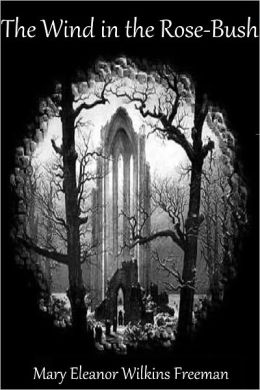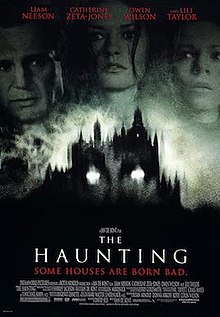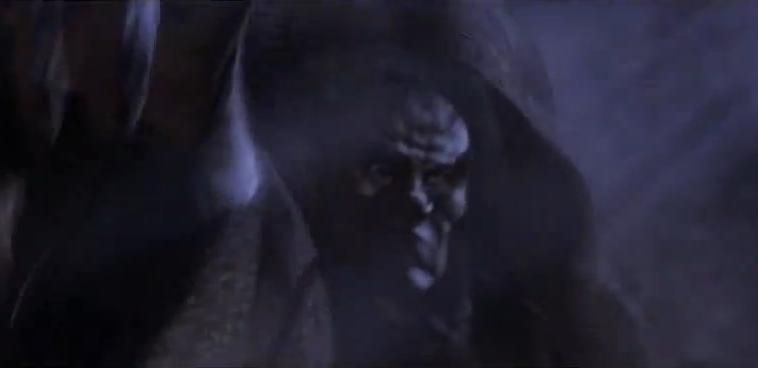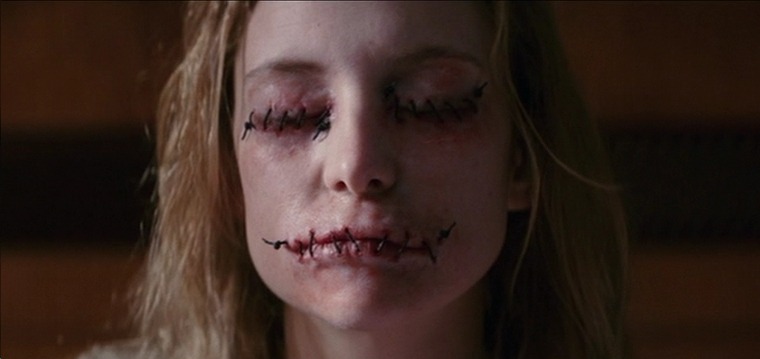**Spoiler Alert - this post contains spoilers about the movie version of "The Yellow Wallpaper"**
As
someone with a penchant for the terrifying, as well as having a healthy appreciation for a good reference, I tend to do some Internet sleuthing after I finish a good horror book or movie. I look for other works, whether they be TV shows, songs or the like, that may have alluded to the work I just finished, or even used it as a base point. It's like a little Internet scavenger hunt. Happening upon a modern adaptation is like stumbling upon the buried chest of treasure marked by a huge red X. I tripped right over one of those treasure chests when I found a
horror movie made just two years ago, using "The Yellow Wallpaper" by Charlotte Perkins Gilman as its
foundation.
At
least, that’s what I thought.
You’ll
have to forgive me, I’m still recovering.
My fragile little heart was content through most of the movie, not
minding how docile it seemed to be. And
then I reached the last twenty minutes.
I
have to give credit to the people who worked on the movie. Having read the original story, the plot
twist at the end BLEW MY MIND. Let’s start at the beginning.
The
movie starts out quite similar to the book, relative to the rest of the film’s
plot anyway. A husband and wife, along
with the wife’s sister, retreat to a house they manage to find for rent after
their own house and everything in it burn down, taking the couple’s young
daughter with it. This brings up the
first interesting dichotomy between the two stories, the difference between the
birth of a child, a boy (book) and the death of one, a girl (movie). At least, there would be a dichotomy, if they
were the same story. But alas, you are
tricked. About halfway through the
movie, it is revealed that the wife has started withdrawing to the attic room,
the one with the yellow wallpaper. She
likes to write up there, and she’s started working on a story. She shares the story with her husband, a
story about a little room with yellow wallpaper, and the woman who sees things
in the moving print. That’s when the
husband asks, “And who’s behind the wallpaper?
Is it you, Charlotte?”
And
then your brain explodes. Because you
realize the movie isn’t about “The Yellow Wallpaper” at all, but the woman who
wrote it.
I remember thinking it a bit odd that her name was Charlotte, but it never clicked until
that scene. Now, as I previously
mentioned, the last twenty minutes were a whirlwind of terror. But, while they were terrifying I do have to say that they were very, very
strange. And I don’t mean in a, “Well
that was a strange yet scary and still relevant to the story plot twist” kind
of way. I mean it in a, “That came out
of nowhere and makes absolutely no sense” kind of way. I believe that is a point that just needs to be made. However, while they were weird and confusing
and I still really have no idea what happened…the end twist is so amazingly
mind-blowing that those last twenty minutes are forgivable. Long story short, the end has Charlotte
infected with some sickness (think vampire, but not really…I’m telling you, I’m
still confused) and she has to be kept away from light during the day. **Heads up!** Conveniently, there’s a panel in the yellow
wallpapered room that opens up into a small space. Her husband gently places her inside the
wall, and as he closes the panel his voice-over begins and he states, “Charlotte
had written…the wallpaper pattern does move.
And no wonder. The woman behind
shakes it.” **End of spoiler**
I’m
going to give you a second to find your balance after that one.
You
good? Alright. Now let’s get to making some sense of
this. I had intended on being ever so
brilliant and making all the connections about male dominance and the
male-dominated culture…you know, back when I thought it was the same
story. However, there were still several
significant plot points that dealt with such a theme, an example being that the movie is narrated by
the male. Whenever anything important is
taking place, the turning over of the keys to the house for example, the
husband, John, is always in the foreground with the two women standing in the
background. There is much talk of
hysteria and overreacting whenever one of the women see, hear or experience
something out of the ordinary. But of
course, when it happens to John, everything is perfectly normal. While Charlotte is the stereotypical,
emotional woman in distress trope, John is the first to move on from the
child’s death. He immediately talks
about getting work and getting out of the house, with the women shocked as it
hadn’t even been a week. When things go
wrong, even if they are stereotypically under the responsibility of the male,
John blames Charlotte and takes out his anger on her. In fact, he rolls his eyes when someone
brings up the issue of rights for the modern woman, and is in full agreement
when a friend of his states, “What else does a woman have if not the joy of
creation?” Even the wife’s sister,
Jennie, is upset because she believes that in getting an education she missed
her chance to be married and secure and taken care of. Which is exactly what John does overbearingly
with Charlotte, constantly telling her not to “exert herself” even though she
is physically fine, unlike her parallel in the original story.
With all that said, the way this movie portrays John is interesting and more complex than meets the eye. What comes off as dominance by a male, I interpret as overcompensation. You have to compare the two situations. In the story, John's wife has just given birth to a baby. Instead of joy and happiness, she is afflicted by something he doesn't understand as a physician in the days before mental illness became a recognized issue. So he asserts the dominance given him by the time they live in. In the movie, on the other hand, John's daughter was taken from him before her time by a fire. It is interesting to note that it is never confirmed whether or not the fire was preventable, or whether something could have been done to save young Sarah from the burning house. He is quite often angry at Charlotte, for things that are not under her control or not her responsibility, and when he is eager to look for work he appears cold and uncaring. But it seems altogether possible that John is just a father who feels helpless and guilty at the loss of his only child and is taking it out Charlotte and her sister, the only other people who can understand his pain and feelings of loss. And, taking a page from the book of stereotypes, as a man John wouldn't be prone to dissolve into hysterics over his feelings, as his wife does throughout the movie. In fact, perhaps John is angry at Charlotte because he's jealous of the way she experiences her feelings so fully. He wants to share in their loss with her, but as a man in that time period, he just doesn't know how.
The idea of male dominance
and male-dominated culture is a favorite issue of Gilman’s, as well as the idea
of there being no escape. That issue
runs through most of her works, and “The Yellow Wallpaper” is no
different. The movie version may be
tamer, but the underlying theme is indeed still there. And while there are definitely similarities
and differences between the two, when it comes down to it, in the end both
women end up becoming the woman behind the wallpaper.
Just a note to anyone who wants to read the story and/or watch the movie:
Gilman's short story can be read online, I believe it's the second result on Google!
I viewed the movie on Netflix, but I've done some checking and it can also be rented for 4 bucks from Amazon Instant Video!
















